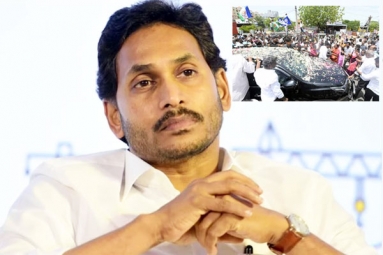
(Image source from: Economictimes.indiatimes.com)
The landscape has shifted since the interim budget in February. Back then, the ruling party stood strong, winning state elections. Many expected a clear victory in the general election. However, the results brought a surprise - the party fell short of a majority, leading to a coalition government. While successful in cities, the party faced setbacks in rural areas, likely due to ongoing economic challenges there. Against this backdrop, the upcoming full budget is anticipated to focus more on rural and lower-income households. Early signs suggest states are already rolling out welfare schemes for rural populations. While fiscal prudence is likely to continue, the budget narrative is expected to shift towards boosting consumption rather than capital expenditure, according to a domestic brokerage report. The central government has also received an additional dividend exceeding ₹1 trillion.
The government has the opportunity to toster spending in urban and rural areas by directing the additional dividend towards this purpose. This could potentially lead to a 10% year-over-year increase in revenue spending, excluding interest and subsidies. contrasts with the interim budget's projected growth of 0-1% based on FY24 Revised Estimates () and 3% based on FY24 provisional actuals. While this may help support consumption at the lower end, Nuvama believes it may not be significant enough to substantially alter the slowing business cycle. India currently faces a demand deficiency due to the lack of macro-economic recycling, as highlighted in their recent economy note. Considering the anticipated moderation in tax revenue, the finance minister might explore alternative financing sources to boost lower-end spending without compromising capital expenditure. The brokerage has identified three potential approaches, one of which is temporarily pausing fiscal consolidation to additional funds to stimulate consumption. Despite the central government's fiscal deficit still being 200 basis points above the pre-COVID target, the aggregate public deficit (including the center, states, and PSUs) is almost back to pre-COVID levels.
Delaying the reduction of government overspending may assist in tackling the overall economic demand challenge. This approach could help alleviate the shortfall between supply and demand in the broader economy. Another option is to raise funds through the balance sheet of government agencies like NHAI, Indian Railways or other PSUs, through additional borrowing or liquidation of existing assets. There has been significant consolidation in PSUs over the past few years and this approach can shift some of the burden of domestic demand revival on these PSUs without deviating from the Centre's fiscal trajectory. Also, the government can significantly increase the investment target, especially for PSUs, taking advantage of dynamic capital markets and high valuation opportunities. Notably, sales of the stock have been slow in recent years. This approach would significantly increase treasury resources and help support necessary spending without compromising financial prudence. The brokerage noted that the government could gain between £1 and £1.5 trillion by exploring the additional sources. If these resources are used for consumption, the brokerage company expects a significant increase in demand in the lower segment of the economy. The media sector is likely to benefit from the government's focus on consumption. In addition, resource companies targeting rural areas will benefit as higher incomes in rural areas tend to support overall consumption.
The fertilizer sector also benefits from these developments. Nuwama expects the government to allocate 2 trillion to the Department of Agriculture to expand priority programs focused on income support and crop insurance for farmers.












